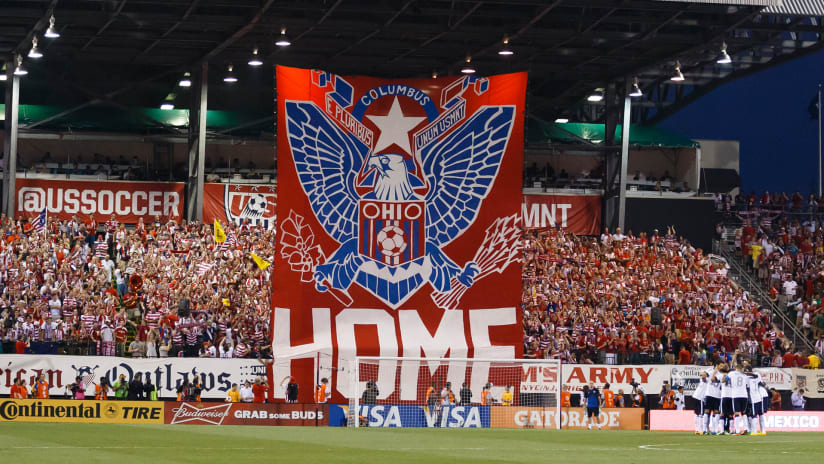Despite being North American neighbors, the first meeting between the United States and Mexico actually took place on the other side of the Atlantic. Played on May 24, 1934 in Rome, the game was a one-off match – essentially the USA’s first World Cup qualifier – for the right to play in the second FIFA World Cup, which was set to kick off days later in venues across Italy.
Playing in front of 10,000 spectators, including Italian dictator Benito Mussolini, the Americans rode a four-goal performance from Aldo “Buff” Donelli to defeat Mexico 4-2 and earn a place in the 16-team field at the 1934 FIFA World Cup.
You would hope the 11 players that came away victorious that day cherished the memory in Rome, because as big as the result was, it would take another 46 years before the USA would defeat Mexico again.
Though 17 of those 24 matches were played on Mexican soil, that winless streak against our neighbors to the south is by far the longest against any one opponent in team history, both in terms of number of games and years,. It fortunately ended on Nov. 23, 1980, when the U.S. used a pair of goals from Steve Moyers to defeat Mexico 2-1 in another Qualifying match, this time for the 1982 FIFA World Cup.
With Mexico already booking its ticket to the next round of Qualifying and the USA already eliminated, from a competitive standpoint, the match was meaningless. However, whether or not they realized it, the 2,126 fans in attendance at Fort Lauderdale’s Lockhart Stadium witnessed history that night, and to this day are among the few Americans that saw the USA’s 43-year winless streak against Mexico come to an end.
Though the USA and Mexico met only once more during the decade, the dam had been cracked. With 1990 marking the MNT’s first appearance in the World Cup in 40 years, the 1980s also served as a transitional phase in the rivalry with Mexico as a new generation of American players began to reap the benefits of greater emphasis on the game here at home to lay the foundation for future triumphs.
The first in a series of successes came during the semifinals of the 1991 CONCACAF Gold Cup. Led by former Mexico head coach Bora Milutinovic, the USA used second-half strikes from John Doyle and Peter Vermes to stun El Tri 2-0 in front of a pro-Mexico crowd of 41,103 at Los Angeles Memorial Coliseum, and went on to win the tournament’s inaugural title.
From there, the USA rattled off an unprecedented five-match unbeaten streak, going 2-0-3 against Mexico from 1993-1996. In that time, the U.S. ran off a memorable 4-0 win on June 18, 1995 in Washington D.C., a result which remains the MNT’s record margin of victory against its closest rival. A month later and a continent away, the Americans dispatched Mexico 4-1 on penalty kicks in the quarterfinals of Copa America ’95 in Paysandu, Uruguay.
With wins on neutral and home soil now regularly achievable, the U.S. reached another milestone in 1997. Playing the eighth match of a long Final Round of Qualifying campaign for the World Cup in France the following year, a U.S. squad reduced to 10 men earned a valuable 0-0 draw at the vaunted Estadio Azteca in Mexico City. The gutsy result marked the USA’s first ever point away on Mexico’s home soil.
And while El Tri rattled off three straight wins to end the decade, a shift had clearly occurred in the rivalry.
The U.S. began the millennium with two friendly victories in 2000, but a whole new chapter was written into the rivalry in 2001 as the two sides opened Final Round Qualifying for the 2002 FIFA World Cup.
While on the field the United States had begun to even the series, off the field was a different matter. Whether north or south of the border, matches between the two sides always felt like home games for Mexico. Looking to create an advantage both from a crowd and weather standpoint, and with the construction of the country’s first soccer-specific stadium in Columbus, Ohio, the U.S. Soccer Federation elected to take the Mexico side out of its comfort zone by placing the Feb. 28 qualifier in central Ohio.
With a kickoff temperature of 29 degrees, the Mexico team shirked the frigid temperatures by electing to stay in its locker room during warm-ups. Outside, the partisan crowd created a decidedly home-field advantage as Josh Wolff and Earnie Stewart led the USA to a 2-0 victory, and a new tradition was born in Columbus.
Both teams eventually qualified for the 2002 FIFA World Cup, where they would memorably collide in the Round of 16. The highest stakes match in the history of the rivalry wasn’t to be played in Los Angeles, Mexico City or Columbus, but instead halfway around the world in Jeonju, Korea Republic. There, U.S. head coach Bruce Arena confounded Mexico’s expectations for the match by deploying a 3-5-2 formation. The tactical switch paid dividends as the U.S. scored two goals in transition, once again defeating Mexico 2-0 – this time on the world’s biggest stage.
With all the bragging rights to be had following the match, U.S. fans playfully reminded their Mexican counterparts of the result with a chant translating the score line into Spanish: “Dos a Cero”.
Over time, that scoreline has become one of the key components of the rivalry, with the USA defeating Mexico by that score on nine different occasions and eight times since 2000.
As you can see, the MNT has found a friendly home for World Cup Qualifying in Columbus, defeating Mexico by the same “Dos a Cero” score line on all four occasions at the venue now called MAPFRE Stadium since 2001. And while the intimate setting in the Ohio capital has been the epicenter for a U.S. resurgence against its bitter rivals, the side has also earned key wins elsewhere since the turn of the century.
Just steps away from U.S. Soccer headquarters, a Bob Bradley-led U.S. side memorably downed Mexico 2-1 in the 2007 CONCACAF Gold Cup Final at Soldier Field in Chicago.
Under the direction of Jurgen Klinsmann, who entered the fray as MNT head coach in 2011, the MNT broke down another barrier as Michael Orozco’s 80th minute strike earned a 1-0 victory at Estadio Azteca – the USA’s first win against El Tri on Mexican soil. Less than a year later, Klinsmann’s side fought to earn another 0-0 draw in World Cup Qualifying at the infamous Azteca.
While the Americans have turned the tide since 2000, Mexico has had their share of triumphs in the series as well. El Tri defeated the MNT in both the 2009 and 2011 Gold Cup Finals, and in the most recent meeting defeated the U.S. in extra time to earn the 2015 CONCACAF Cup and the region’s berth at the 2017 FIFA Confederations Cup.
More than 80 years of memories fill up the scrapbook of the USA-Mexico rivalry. Measured by decades, what began as a notebook for recording Mexico victories has now turned into a page-turner in which the U.S. holds the edge on its shores. The next chapter will begin on Nov. 11, where the legacy of Fort Columbus continues and the stakes are high. That’s what thrillers – and rivalries – are made of.

